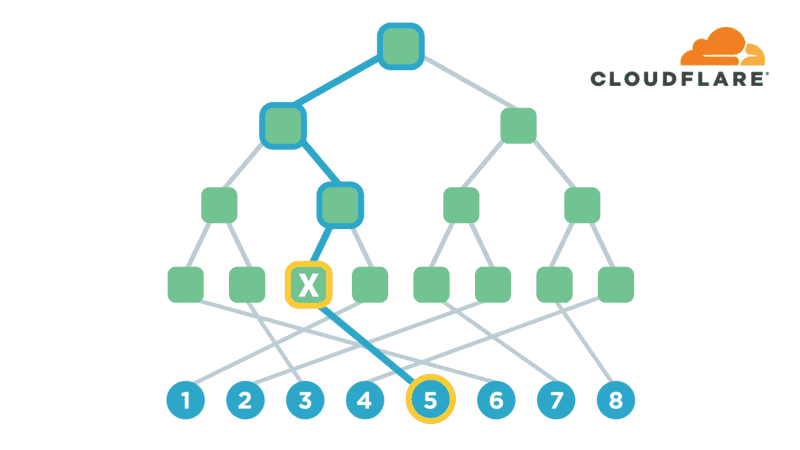Alibaba Cloud Kicks Off Hiring Surge
The company is recruiting IT professionals with expertise in networking, database management,...
The company is recruiting IT professionals with expertise in networking, database management,...
Today's Heavy Networking, sponsored by Cisco, examines results and insights from 1,300 global CIOs in Cisco's CIO Perspectives 2020 survey. Guest Jo Peterson, VP of Cloud & Security for Clarify360, shares highlights and learnings on CIO priorities, security, digital transformation, empowering teams, and more.
The post Heavy Networking 522: How CIOs Prioritize Security – Cisco’s CIO Perspectives 2020 Survey (Sponsored) appeared first on Packet Pushers.
Long gone are the days when high performance computing was limited solely to traditional simulation and modeling at academic and government research labs. …
A New Era In High Performance Computing was written by Timothy Prickett Morgan at The Next Platform.
Dan Stanzione has a lot of compute power at his fingertips. …
Attacking The Novel Coronavirus With Supercomputing Cycles was written by Jeffrey Burt at The Next Platform.

When people connect to the Internet, they can change the world for the better. And so many people have done just that, using this transformative technology to make strides in education, economic opportunity, and health outcomes. But Internet access is only part of the equation. There’s now a different kind of divide: the gap between those who have the knowledge and skills to use the Internet to empower themselves and their communities – and those who don’t.
To address this gap, the Internet Society Foundation is launching SCILLS: Strengthening Communities, Improving Lives and Livelihoods. The program aims to expand economic growth, improve health outcomes, and increase educational opportunities – by supporting communities to more knowledgeably and skillfully use the Internet.
In its pilot year, the program is open to eligible organizations in Bangladesh, Colombia, and Senegal, with expansion to additional countries planned in coming years. It provides grants of up to $150,000 USD for projects lasting up to 24 months. Applications are open between 9 June and 3 July, and grantees will be announced in early September.
The Internet is for everyone – a critical lifeline that can Continue reading

Encryption is one of the most powerful technologies that everyone uses on a daily basis without realizing it. Transport-layer encryption, which protects data as it’s sent across the Internet to its intended destination, is now ubiquitous because it’s a fundamental tool for creating a trustworthy Internet. Disk encryption, which protects data while it’s sitting idly on your phone or laptop’s hard drive, is also becoming ubiquitous because it prevents anybody who steals your device from also being able to see what’s on your desktop or read your email.
The next improvement on this technology that’s starting to gain popularity is end-to-end encryption, which refers to a system where only the end-users are able to access their data -- not any intermediate service providers. Some of the most popular examples of this type of encryption are chat apps like WhatsApp and Signal. End-to-end encryption significantly reduces the likelihood of a user’s data being maliciously stolen from, or otherwise mishandled by a service provider. This is because even if the service provider loses the data, nobody will have the keys to decrypt it!
Several months ago, I realized that I had a lot of sensitive files on my computer (my diary, if Continue reading
There’s one thing no cloud vendor ever managed to change: virtual machines running on top of cloud infrastructure expect to have Ethernet interfaces.
It doesn’t matter if the virtual Ethernet Network Interface Cards (NICs) are implemented with software emulation of actual hardware (VMware emulated the ancient Novell NE1000 NIC) or with paravirtual drivers - the virtual machines expect to send and receive Ethernet frames. What happens beyond the Ethernet NIC depends on the cloud implementation details.
As service providers adopt virtualization and SDN capabilities, they are being held back by...
I recently purchased a new Apple Magic Mouse 2 and an Apple Magic Trackpad 2—not to use with my MacBook Pro, but to use with my Fedora-powered laptop (a Lenovo 5th generation ThinkPad X1 Carbon; see my review). I know it seems odd to buy Apple accessories for a non-Apple laptop, and in this post I’d like to talk about why I bought these items as well as provide some (relatively early) feedback on how well they work with Fedora.
First, let me talk about the why behind my purchase of these items. Several years ago, I started simultaneously using both an external trackpad/touchpad and an external mouse with my macOS-based home office setup. I realize this is probably odd, but I adopted the practice as a way of eliminating “mouse finger” on my right hand. With this arrangement, I stopped trying to scroll with my right-hand (either using a mouse wheel with older mice or using the scroll-enabled back of the Magic Mouse), and instead shifting scrolling to my left hand (using two-finger scrolling on the trackpad). This “division of labor” worked well. Because my existing Magic Mouse and Magic Trackpad—both earlier generations—don’t work with Continue reading
AT&T activated the first US dynamic spectrum sharing deployment; Ericsson burned cash on China...
Today, the operational role of IT is obvious. The rapid developments enabled by automation create genuine business value. The results that can be achieved by automation have a direct link to a company’s business goals.
As a CTO or CIO, sometimes you need help articulating this to stakeholders. Translating IT departments’ performance into business prioritized KPIs. Most see efficiency gains, cost and risk reductions, for example. Automation is clearly an executive-level issue.
At first, Ansible was a classical tool that was utilized for specific automation. Ansible helps your team automate routine tasks, so that they can instead focus on what you want to do. The platform enables you to structure work by automating your processes.
The global, all-day digital event – Ansible Automates 2020 – takes place on June 10. The event provides inspiration as to how the automation journey can be accelerated and taken to the next level. And no, we’re not going to discuss functionality and technology all day. We want to highlight the cultural and behavioral changes that are linked to the trend towards greater automation.
For organizations to achieve the best results, Continue reading
May means more content! There was a very exciting announcement from us this month, and if you missed it don’t worry, you can read all about it below. In addition, we were keeping very busy with fresh podcast episodes, informative blog posts and much more. Ready to dive into all things open networking? Get comfortable and let’s dive in.
UCMP: Augmenting L3 only designs: So what makes a purely L3 design so aspirational? Can a UCMP increase efficiency? Read this blog post by Rama Dharba as he addresses these questions and more. He delves into the challenges surrounding this type of design, possible solutions and a recent augmentation in Cumulus Linux 4.1 that increases the design’s ability for flexibility.
Kernel of Truth season 3 episode 6: Building modern campus networks: Let’s talk about all things modern campus networks. In this new Kernel of Truth episode, Brain O’Sullivan, Roopa Prabhu, Eric Pulvino and David Marshall dive into trends, technologies, architecture and much more. Grab your headphones and get ready to hear first-hand experiences from building these networks as well as tips and tricks learned along the way.
Build an OpenStack/ Ceph cluster with Cumulus Networks in Continue reading
Companies can kiss their dream of a future dominated by smart machines goodbye unless they start...
QUIC is a relatively new data transport protocol developed by Google, and currently in line to become the default transport for the upcoming HTTP standard. Because of this, it behooves every network engineer to understand a little about this protocol, how it operates, and what impact it will have on the network. We did record a History of Networking episode on QUIC, if you want some background.
In a recent Communications of the ACM article, a group of researchers (Kakhi et al.) used a modified implementation of QUIC to measure its performance under different network conditions, directly comparing it to TCPs performance under the same conditions. Since the current implementations of QUIC use the same congestion control as TCP—Cubic—the only differences in performance should be code tuning in estimating the round-trip timer (RTT) for congestion control, QUIC’s ability to form a session in a single RTT, and QUIC’s ability to carry multiple streams in a single connection. The researchers asked two questions in this paper: how does QUIC interact with TCP flows on the same network, and does UIC perform better than TCP in all situations, or only some?
To answer the first question, the authors tried running QUIC Continue reading
The vendor's business in China has grown as of late, having inked contracts with the country’s...
The updates follow a move by Chef last year to revamp its development, platforms, and go-to-market...